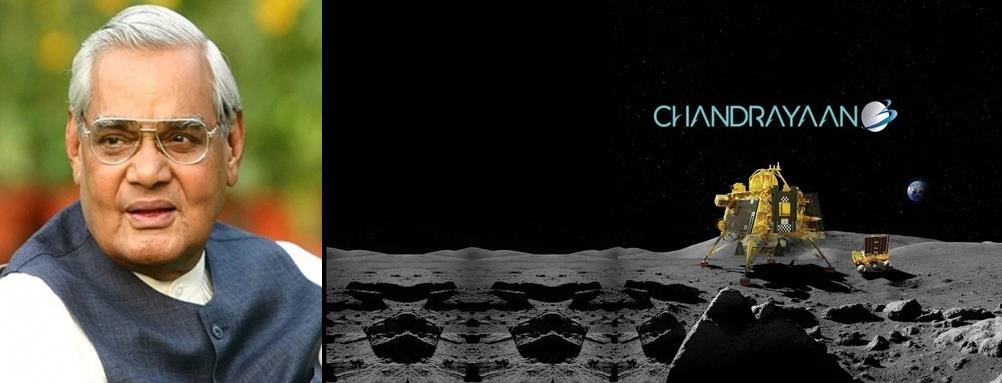(MENAFN- IANS) New Delhi, Aug 27 (IANS) It was a historic moment when on August 23, at 6.04 p.m., India accomplished its lunar mission and made its mark on the unexplored south pole of the Moon, the only nation in the world to do so.Taking this firm step further in enhancing its lunar understanding, the resounding success of this technological feat is tfar a culmination of ISRO's dedication to its cause -- on meagre funding.
It was on July 14, 2023, that Chandrayaan-3 was launched into space. It entered lunar orbit on August 5, and made a soft landing on the lunar south pole region in the evening of August 23. India is now the fourth country to land on the Moon after the U.S., Russia and China.
The successful landing of Chandrayaan-3 is particularly a feat given the unpredictable lightening conditions and the mountainterrain of the moon's surface which makes soft landing a challenge.
Chandrayaan-3 is expected to be functional for two weeks, and run a series of experiments, one of them being a spectrometer analysis of mineral composition of the lunar surface.
Prior to this, the“partially successful” Chandrayaan-2 was launched on July 22, 2019. Its lander was expected to touch down on the lunar surface on September 6, 2019, but it crashed after losing contact with earth, deviating from its intended trajectory while attempting to land.
The genesis of India's lunar exploration goes back to 1999 when it was given the government's approval. Atal Bihari Vajpayee, then Prime Minister, was instrumental in motivating scientists to explore the moon. He also renamed the mission from Somayaan to Chandrayaan.
Dr K. Kasturirangan, the former chairperson of the Indian Space Research Organisation (ISRO), is on record as saying that“Vajpayee said the mission should be called Chandrayaan, and not Somayaan, as the country has emerged as an economic power, and will make many exploratory journeys to the Moon."
The idea of exploring the moon gained prominence in 1999 after a series of discussions within the Indian Academy of Sciences, and subsequently, within the Astronautical Society of India in 2000.
Pegged on the insights emerging at these forums, ISRO established the National Lunar Mission Task Force, a body comprising prominent technologists and scientists. It deliberated to evaluate the feasibility and specifics of an Indian lunar mission, given its potential aims and configuration.
Also driven by increased international lunar interest and the opportunity for advancement in this domain, it was eventually unanimously recommended that India must undertake a lunar mission.
In November 2003, the Central government approved the ISRO's proposal for the inaugural Indian Moon Mission, paving the way for Chandrayaan-1 to take flight.
On August 15, 2003, on the occasion of Independence Day, Prime Minister Atal Bihari Vajpayee unveiled India's first moon exploration plan: Chandrayaan-1.“Our country is now ready to fly high in the field of science. I am pleased to announce that India will send her spacecraft to the moon by 2008. It is being named Chandrayaan,” he declared.
The development of Chandrayaan-3 had begun in January 2020 and the launch was planned the following year, but the outbreak of the Covid-19 pandemic led to continued delays in executing the mission.
The lunar south pole is a region that is believed to have reserves of ice, indicating that the presence of water could be a source of oxygen. This is a finding to validate future moon missions or even a more permanent colony on the Moon.
The environment at the moon's surface keeps the ice from melting. There is a possibility that the ice contains compounds that might give some insight into the history of the Moon, Earth, and solar system.
This ice could also mean a source of drinking water as well as of oxygen and hydrogen as fuel for manned missions in the future.
Talking about the 'elite' club of space countries, Russia's maiden moon mission in 47 years failed recently when its Luna-25 spacecraft crashed on the moon. A Japanese attempt made in April too had failed.
Other countries that failed landing on the lunar south pole region are Israel, US, China, and the UAE.
In December 2019, ISRO requested for Rs 75 crore to initially fund the project, of which Rs 60 crore was for meeting expenditure pertaining to machinery, equipment, and other capital expenditure, and Rs 15 crore was intended for operating costs.
Former ISRO Chairman, K.Sivan estimated the cost of this mission to be between Rs 615 crore to Rs 721 crore.
Finally, the budget for Chandrayaan was under Rs 615 crore. The approved cost of Chandrayaan-3 stood at Rs 250 crores, without the cost of the launch vehicle.
Luna-25 of Russia cost an equivalent of Rs 1600 crore. Chandrayaan-3 took 40 days to touch down on the Moon; Luna was to land on the eleventh day.
To put India's shoestring budget for space exploration in perspective, the 75 million dollar Chandrayaan-3 project stands in stark contrast to the popular Hollywood movie 'Interstellar' which cost 165 million dollars.
What this indicates is that other countries may look to India for low cost solutions for advancements in the field of space. This also means that India's space budget may suitably increase to facilitate greater studies and technological advancements.
Prime Minister Narendra Modi has announced the historic day of August 23 as National Space Day to honour the remarkable achievement of India's scientific community. Certainly, for India now, the limit is beyond the sky!
(Kavya Dubey may be reached at )
--IANS
kvd/bg




















Comments
No comment